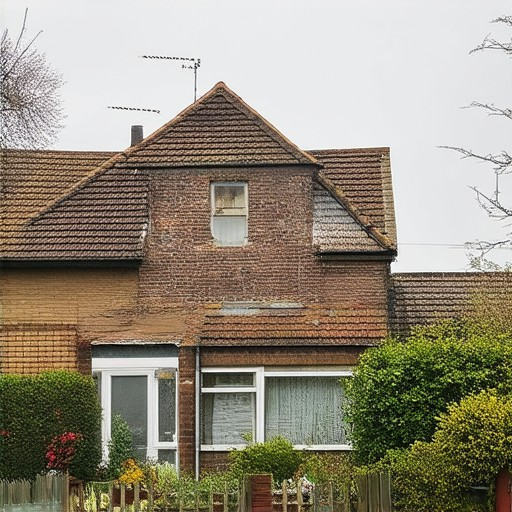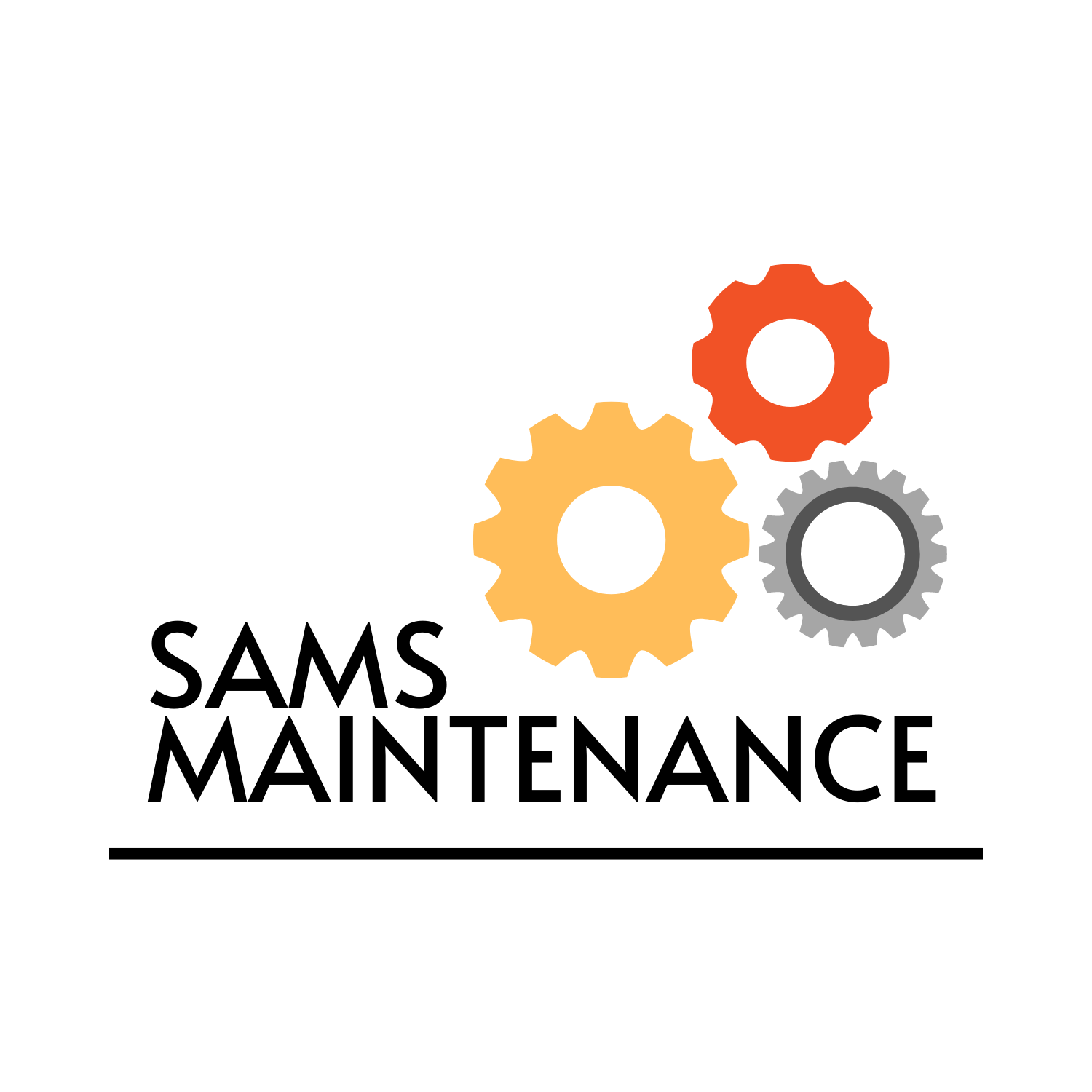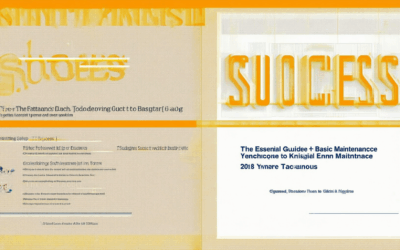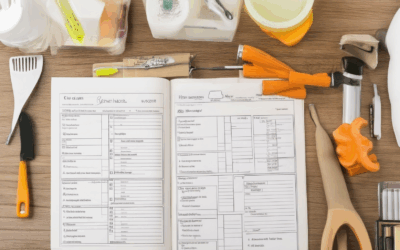Keeping you up at night? Whether it’s leaky pipes, peeling paint, or mysterious noises, homeowners often face a never-ending list of tasks that seem overwhelming. But staying on top of basic upkeep doesn’t have to be a chore—it can be a proactive step toward preserving your home’s health and longevity. In this comprehensive guide, we’re diving into the essential basics of home upkeep, providing actionable insights and practical tips to help you maintain your property in top shape. From checking your plumbing system to ensuring your HVAC runs smoothly, we’ll cover everything you need to know to keep your home in great condition. By addressing these areas early, you can prevent minor issues from escalating into major problems, save yourself time and money in the long run, and ensure your home remains a safe and comfortable place for years to come.
Key Takeaways
- Schedule Regular Inspections: Regularly check your home to prevent minor issues from becoming major problems and ensure longevity.
- Replace Durable Components Every 20 Years: Know when to replace roofing, siding, and other elements to save on costly repairs and improve durability.
- Upgrade for Energy Efficiency: Invest in modern, energy-efficient systems to reduce utility bills and contribute to environmental sustainability.
- Use a Maintenance Checklist: Organize your upkeep routine with a checklist to ensure nothing is overlooked, enhancing your home’s value and functionality.
- Prioritize Safety: Regularly inspect plumbing, electrical systems, and chimneys to ensure your home is safe for occupancy.
- Extend Home Lifespan: Consistent maintenance preserves your home’s structure, ensuring it lasts longer and performs better.
- Invest in Quality Materials: Choose durable materials for longevity and reduced maintenance needs.
- Plan for Replacements: Anticipate replacements of key components to budget effectively and avoid unexpected costs.
- Consult Professionals: For complex tasks, seek expert advice to ensure safety and quality.
- Maintain for Better Resale Value: A well-maintained home attracts buyers and sells for a higher price.
- Save on Energy Costs: Modern, efficient systems lower your energy consumption and utility bills.
- Prevent Minor Issues from Becoming Major: Early detection of problems prevents costly repairs and stress.
- Boost Curb Appeal: Maintain exterior features like paint and fences to enhance your home’s attractiveness.
- Prepare for Emergencies: A well-maintained home is ready for unexpected events, reducing inconvenience.
- Enhance Comfort: Reliable systems ensure consistent heating, cooling, and utility performance.
- Stay Organized with Documentation: Keep maintenance records for repairs, insurance, and future reference.
- Consider DIY Projects: Tackle manageable tasks yourself to save money and gain confidence.
- Ensure Structural Integrity: Regular checks prevent structural issues, keeping your home stable.
- Improve Air Quality: Maintain air filters and ductwork for cleaner indoor air.
- Conserve Resources: Use energy-efficient appliances to conserve water and electricity.
- Ensure Proper Functionality: Well-maintained systems operate smoothly, improving your daily life.

What is the 1% Rule for Home Maintenance?
The 1% rule for home maintenance is a simple yet effective strategy to budget for unexpected repair costs. Here’s a breakdown:
- 1% Rule Calculation: Set aside 1% of your home’s purchase price annually for maintenance. This covers repairs, replacements, and unexpected issues.
- Example: For a $300,000 home, 1% is $3,000 annually or approximately $250 monthly.
- Why It Matters: Homes require regular upkeep, and the 1% rule helps prepare for unforeseen expenses without overwhelming you financially.
### Additional Considerations
- Appliance Breakdown: Major appliances like HVAC systems or refrigerators often fail, requiring immediate attention. The 1% rule helps cover these costs.
- Emergency Preparedness: Natural disasters or accidents can lead to costly repairs. Having a maintenance fund eases the financial burden during crises.
- Customizing Your Budget: Adjust the 1% based on your home’s unique needs. For example, homes with septic tanks or specialized systems may require more funds.
### How to Create a Maintenance Budget
- Track Expenses: Keep a record of all maintenance-related costs to better understand your spending habits.
- Prioritize Repairs: Address urgent issues first, such as leaky pipes or electrical problems, before moving on to routine upgrades.
- Consider Insurance: Some home insurance policies cover certain maintenance costs. Review your policy to maximize benefits.
For more insights and tools to manage your home maintenance budget, visit our maintenance resources . Also, explore tips and guides on HomeAdvisor and Fixer Upper for additional inspiration and practical advice.
Regular Home Maintenance Checklist: 10 Essential Tasks
Keeping your home in great shape requires consistent effort. Here’s a comprehensive guide to essential monthly maintenance tasks:
- Plumbing Check: Inspect pipes for leaks, check water flow in drains, and use a plunger or drain cleaner for clogs. Avoid harsh chemicals and opt for eco-friendly solutions.
- Electrical Systems: Test all switches and outlets to ensure they’re functioning properly. Note any issues that require professional attention.
- Heating and Cooling Systems: Clean or replace air filters monthly. Inspect vents for obstructions and schedule professional inspections if needed.
- Exterior Maintenance: Check for missing or damaged shingles, clean gutters, inspect the chimney, and examine walls for peeling paint or rotting wood.
- Appliance Care: Change HVAC filters, clean vent hood filters, and check washer/dryer hoses for cracks. Run the dryer with the door open to prevent mold growth.
- Fire Safety: Test smoke detectors and CO detectors, replace batteries, and ensure fire extinguishers are accessible and properly maintained.
- Flooring and Surfaces: Clean grout lines, inspect hardwood floors for damage, and check tiles for cracks. Seal grout for protection.
- Windows and Doors: Ensure they close and lock properly, check for gaps or drafts, and clean screens and tracks.
- Garden and Yard: Trim trees, prune plants, weed, and fertilize as needed. Clear gutters and ensure downspouts direct water away from the house.
- Water Heater Maintenance: Check the pressure relief valve, flush the tank, and schedule professional service if needed.
- Personal Safety: Secure loose rugs, tidy cables, and use sturdy step stools and ladders safely.
Stay organized by prioritizing tasks based on urgency and creating a monthly maintenance schedule. This proactive approach ensures your home remains safe, efficient, and comfortable year-round.

Examples of Maintenance Needs
Regular maintenance is essential to ensure the longevity and functionality of various systems and tools in a home or facility. Here are some common examples:
- Home Systems: – HVAC (Heating, Ventilation, and Air Conditioning): Checking and replacing air filters, inspecting ductwork for leaks, and scheduling regular tune-ups. – Plumbing: Inspecting pipes for cracks or leaks, testing water pressure, and clearing clogged drains. – Electrical: Testing circuit breakers, ensuring wiring is secure, and checking for outdated or faulty appliances. – Fire Safety: Examining smoke detectors, carbon monoxide detectors, and fire extinguishers to ensure they are functioning properly.
- Appliances: – Refrigerators: Cleaning coils, defrosting, and checking door seals for proper closure. – Dishwashers: Cleaning the filter, checking the drain hose for blockages, and ensuring the door seal is tight. – Washing Machines: Cleaning the lint trap, checking the drain hose, and inspecting the tub for wear and tear.
- Vehicle Maintenance: – Oil Changes: Regularly changing oil and filters to prevent engine damage. – Tires: Inspecting for proper inflation, checking tread depth, and rotating tires as needed. – Battery: Testing battery life and ensuring terminals are clean and secure.
- Garden and Outdoor Equipment: – Lawn Mowers: Sharpening blades, cleaning debris from the mower, and checking fuel levels. – Sprinkler Systems: Inspecting for leaks, adjusting timers, and ensuring all components are functioning properly.
- Technology Devices: – Smart Home Devices: Updating firmware, checking connectivity, and ensuring all smart devices are working in tandem. – Computers and Laptops: Running updates, cleaning hard drives, and inspecting cables for damage.
Maintaining these items helps prevent costly repairs and ensures everything runs smoothly. Regular inspections and timely replacements are key to extending the lifespan of your investments.

What is the 5 Year Maintenance on a House?
Maintaining a house over five years requires a comprehensive approach to ensure longevity and functionality. Here’s a detailed breakdown of key areas to focus on:
Exterior Maintenance
- Roof Inspection:** Inspect for missing, damaged, or loose shingles. Replace or repair as needed.
- Siding Check:** Look for peeling paint, rotting wood, or damage from pests. Replace or repaint as necessary.
- Foundation Inspection:** Examine for cracks, gaps, or signs of settling. Address issues promptly to prevent structural problems.
- Gutters and Downspouts:** Clean and clear to prevent clogs and water damage. Ensure they direct water away from your home.
Interior Maintenance
- Cabinets and Countertops:** Check for wear and tear. Refinish or replace as needed to maintain functionality and aesthetics.
- Pipes and Plumbing:** Inspect for leaks or corrosion. Schedule regular checks for optimal performance.
- Electrical Systems:** Test switches, outlets, and wiring. Ensure all components are functioning safely and efficiently.
- Air Filters:** Replace or clean according to manufacturer guidelines to maintain indoor air quality.
Appliance Maintenance
- HVAC Systems:** Schedule annual tune-ups to ensure energy efficiency and reliability. Replace filters regularly.
- Plumbing Fixtures:** Descale showers, sinks, and toilets. Check for leaks and ensure proper drainage.
- Microwave and Dishwasher:** Clean interiors and ensure smooth operation. Replace worn-out parts as needed.
Landscaping and Yard Care
- Tree and Shrub Trimming:** Keep branches trimmed to avoid damage from storms or overgrowth.
- Lawn Mowing and Fertilization:** Maintain grass height and apply fertilizer seasonally to promote healthy growth.
- Garden Beds Maintenance:** Weed control, soil preparation, and mulching to keep plants thriving.
Garage and Driveway
- Garage Door Inspection:** Ensure smooth operation and check for rust or damage. Lubricate moving parts if necessary.
- Driveway Sealing:** Apply sealant to protect against cracking and fading, maintaining curb appeal.
- Asphalt Repairs:** Fill cracks and patch damage before it becomes a bigger issue.
Additional Tips
- Regular Inspections:** Conduct visual checks monthly to catch potential issues early.
- Professional Help:** Consider hiring professionals for specialized tasks like chimney cleaning or termite inspection.
- Documentation:** Keep records of maintenance activities and repairs for future reference.
By following this 5-year maintenance plan, homeowners can ensure their property remains in excellent shape, reducing the need for costly repairs and extending the lifespan of their home. For more detailed guides and DIY tips, visit Sams Maintenance .
What Should I Replace in My House After 20 Years?
Over time, various components of your home will require replacement due to normal wear and tear. Here’s a guide to help you identify what needs attention:
- Roofing : Asphalt shingles typically last 20-30 years. Consider upgrading to metal or tile roofing for longevity.
- Siding : Vinyl siding lasts about 20-25 years. Fiber cement siding is a durable alternative requiring less maintenance.
- Windows : Replace windows every 15-20 years. Opt for energy-efficient models to reduce long-term costs.
- Doors and Trim : Wood doors may need replacement every 15-20 years. Composite or steel doors offer greater durability. Paint or replace trim if it shows signs of damage.
- Fencing : Pressure-treated wood fencing lasts 15-20 years. Vinyl or composite fencing are low-maintenance alternatives. Add fencing if needed for outdoor space.
- Decks and Patios : Deck boards typically last 10-15 years. Update patios with concrete or pavers for longer lifespan.
- Electrical Systems : Upgrade circuit breakers and wiring every 10-15 years for safety and new technology. Check outlets and switches regularly.
- Plumbing Fixtures : Replace faucets, showers, and pipes as needed. Install modern, water-efficient fixtures for savings.
- Appliances : Refrigerators and ovens last about 10-15 years. Replace stoves and dishwashers sooner if heavily used.
- Flooring : Refinish hardwood floors or replace carpets. Tile flooring may require grout replacement if damaged.
- Gutters and Downspouts : Aluminum gutters last 20-25 years. Consider seamless gutters for leak prevention.
- Exterior Paint : Look for peeling paint and repaint the exterior every few years to maintain curb appeal.
- Masonry : Repoint bricks and mortar after 20 years to prevent cracks and uneven surfaces.
- HVAC and Plumbing Systems : Regularly inspect and replace old systems with energy-efficient models for improved performance.
Remember to consult a professional for evaluations and replacements to ensure safety and quality. Planning ahead can help extend your home’s lifespan and enhance its functionality for years to come.

Why is a House Maintenance Checklist Important?
A house maintenance checklist is crucial for homeowners and tenants alike. It ensures that essential tasks are performed consistently, helping to preserve the property’s condition and functionality. Here’s a breakdown of its importance:
- Prevents Major Issues : Regular checks help identify and fix minor problems before they escalate into significant, costly repairs. For example, addressing a leak promptly prevents water damage.
- Maintains Home Value : Consistent maintenance keeps the property in good shape, which translates to higher resale value. A well-maintained home appeals more to buyers.
- Ensures Safety : Tasks like checking electrical systems or chimneys can prevent accidents such as fires or electric shocks.
- Saves Money : Regularly servicing appliances and systems extends their lifespan and reduces the need for costly replacements. Energy-efficient systems also lower utility bills.
- Boosts Efficiency : Properly maintained systems like air ducts and HVAC units operate better, contributing to a more comfortable living environment.
- Extends Property Lifespan : Early detection of wear and tear through regular inspections can prevent structural issues, preserving the home’s integrity.
By using a house maintenance checklist, homeowners can manage their properties effectively, ensuring longevity, safety, and efficiency.




0 Comments